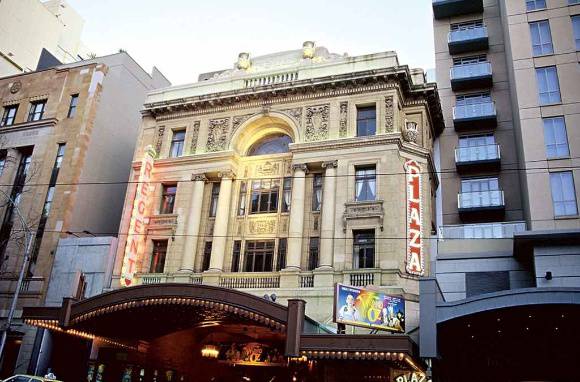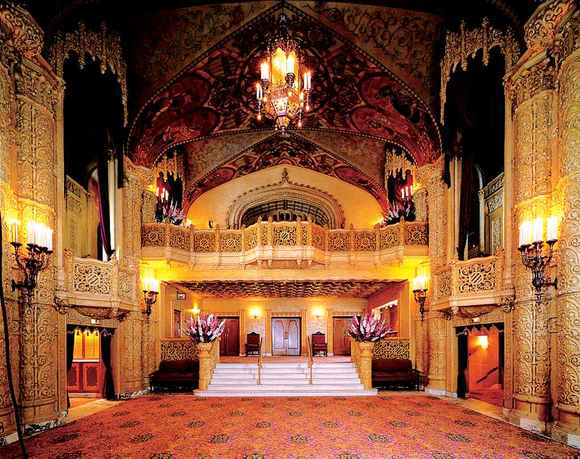| Back to search results » | Back to search page » |
|
Regent & Plaza Theatres
Location191-197 Collins Street,, MELBOURNE VIC 3000 - Property No B2322
File NumberB2322LevelNational |
|
Statement of Significance
The Regent & Plaza Theatres, designed by Messrs. Cedric H. Ballantyne & Associates, Architects, built by Messrs. James Porter & Sons and opened in 1929, is of architectural, historical and social significance at the National level.
The Regent Theatre has architectural significance for the imaginative use of historic precedents to create a sequence of spectacular interior spaces; it is one of the most elaborate and sumptuous of the palace-style interiors that dominated 1920s cinema design in Australia. The complex series of foyers and lobbies and the basement level Plaza cinema are replete with references to Spanish Baroque and medieval styles, while the huge auditorium derives from the French Renaissance and Empire styles, complete with a gigantic crystal chandelier, creating a historicist tour-de-force rivalled only by the smaller State Theatre in Sydney in evoking the splendour and majesty of a European palace.
Historically, the Regent is the largest of the six most important 1920s 'picture-palaces' that remain in Australia. It is the largest palace-style interior, like the Sydney State and the much plainer Palais in St. Kilda, in distinction to the rarer night sky 'atmospheric' effects of the Melbourne State (originally the largest but reduced in the 1960s into the Forum) and the matching Sydney Capitol, or the unique crystalline cave-like interior of the Melbourne Capitol (also altered). The Regent was the flagship of the nation-wide Hoyts cinema chain, which consisted of large, palace-style 'Regents' in every capital and large country town. With the second, separate Plaza cinema in the basement, it was the first, and for many years the only, double cinema complex in Victoria. The Plaza was the first cinema in Australia to install the wide screen Cinerama in 1958.
The Regent has associations with Frank Thring Snr., who established the nation wide Hoyts cinema chain in the 1920s, and in the early 1930s, created 'Efftee Films', Australia's major film production company of the era. Hoyts was rivalled only by Union Theatres, who built the gigantic and exotic Melbourne State in the same year: it was a race for completion which the State won by a month. The theatre is also one of the works for which the architect Cedric Ballantyne is best known.
Socially, the Regent Theatre played a major role in popular entertainment in Melbourne, as one of the most well known and loved cinemas for 40 years. Its popularity was such that after a disastrous fire in 1945 that destroyed the auditorium, the State Government lifted post war building restrictions to allow it to be completely re-constructed, almost as originally designed. This work was supervised by Cowper, Murphy and Appleford, Architects. This popularity also led to it becoming the subject of Melbourne's longest running conservation debate, when, after closing in 1970, Union bans prevented its demolition as part of the development of a long sought city square. The Regent then remained empty for over 25 years as debate raged over its future, and the design of the city square. In the mid 1990s, the whole building, including furniture, was refurbished or reconstructed as accurately as possible by Allom Lovell & Associates in one of the major restoration jobs in Melbourne. The Plaza became a function venue, and the main auditorium a major live theatre venue, the whole reopening in 1996 to wide acclaim.
Classified: 15/11/1979
Group
Recreation and Entertainment
Category
Cinema





